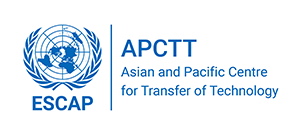Interfacially Active Enzymes for Esterification
The present technology suggests a process for the preparation of esters using an interfacially active enzyme (lipase), which comprises of following steps: Step 1- Preparation of a mixture of water and substrates in an appropriate buffer. Step 2- Generation of colloidal dispersion of air in water by pumping air into the said mixture at a temperature ranging between 5 to 60°C, to obtain a biphasic phase consisting of an aqueous and non-aqueous phase. Step 3- Addition of an interfacially active enzyme to the said colloidal dispersion to catalyze the reaction. Step 4 -Maintaining the reaction phase volume constant for an appropriate period of time. Step 5 - Contacting the interfacially active enzyme with the colloidal dispersion to obtain enriched fractions of the products. Step -6 Recovering the esters from the enriched fractions of the products by the known methods.
Sector: Pharmaceuticals
Country: India
Area of Application: Esterification,enzymes
Keywords: Esterification
Advantages: Facilitates maximum contact with the substrates Products could be conveniently extracted at the end of the reaction. Generate biphasic phase made of air and water to conduct the lipase reactions. This system enhances the life of enzymes and also lipases from the other sources could be utilized. Used in cosmetic and detergent markets. Reduces cost intensive and environment threatening organic solvents.
Environmental aspects: Not Applicable
Development Status: Laboratory Model
Legal Protection: Patent
Technical specifications:
Transfer Terms: Technology Licensing
Target Countries: India
Estimated cost (US$):
Upload any relevant document:
Contact Person: SkyQuest Technology Consulting Pvt. Ltd.
Address: 501, Krishna Complex, Opp. Devashish School, Bodakdev
City: Ahmedabad
Country: India
Zip/Pin Code: 380054

